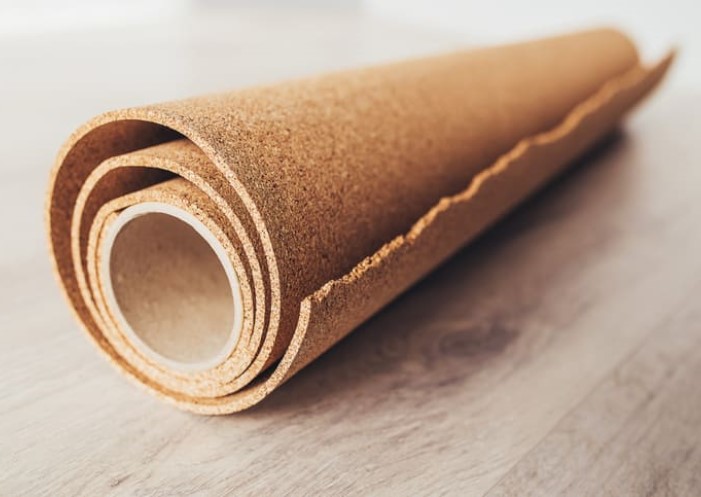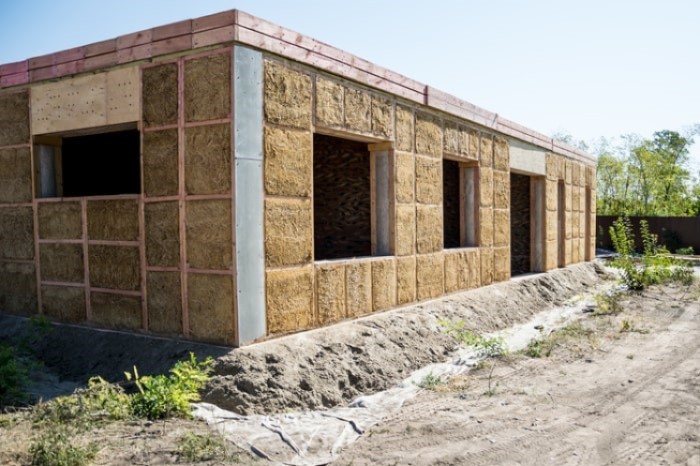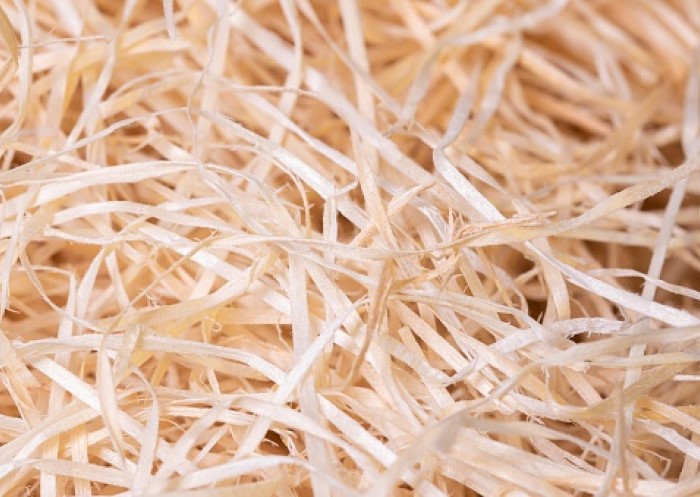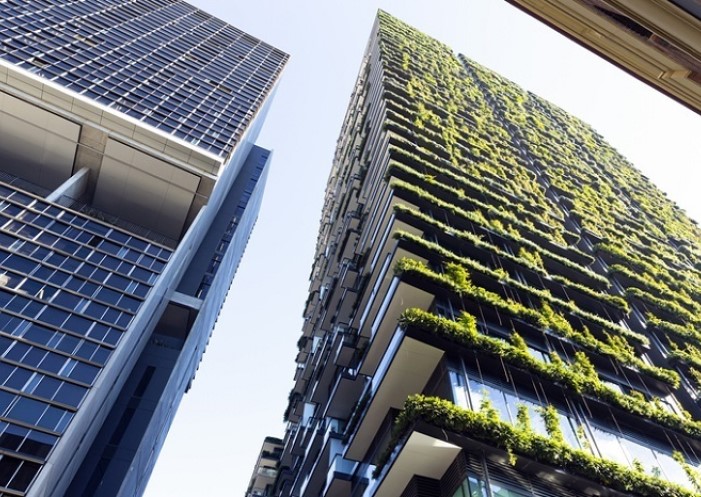Table of contents
As the effects of climate change become ever more apparent, the building industry is recognising the importance of environmental protection and sustainability. The construction and operation (temperature control and maintenance) of buildings can be made more environmentally friendly by using sustainably produced materials such as cork. Until recently, cork was predominantly specified as sound insulation, but it is now gaining traction in the construction industry as thermal insulation. This guide will look at cork sustainability and discuss the advantages and disadvantages of using cork as a building material.
What is cork, and is it suitable for sound, thermal insulation, or both?
The term cork refers to tree bark peeled from the cork oak’s trunk. Age-old techniques are used to cut into the cork with an axe to peel it off in large pieces or planks. All trees form bark as a protective layer around their trunks, but the bark of the cork oak grows particularly thick, making it suitable for processing into various products. It is most common in the western Mediterranean region, with more than half of the world’s cork produced in Portugal.

The first peeling refers to the first cork removed from a particular tree. The first peeling contains a lot of resin, making it suitable for processing without additional binders. It is ground down to granules and then exposed to steam, which makes the granules swell. Whilst it expands, it can be shaped into the desired form. This is called baked cork and is used mainly for thermal insulation, such as cork insulation boards for floors and walls.
The second peeling of a cork oak has a lower resin content than the first peeling. Therefore, once it is crushed into granules, it may be mixed with artificial resins such as polyurethane or phenolic resin and pressed into the desired shape. This pressed cork is used to make a range of products, including bottle corks, floor coverings and pinboards. It can also be used for producing cork insulation panels.
Cork can be used as thermal insulation or for soundproofing in various areas of the house:
- Cork granulate, or granulated cork can be blown or poured into ceiling voids and cavity walls (walls consisting of two vertical layers of masonry joined with metal ties with a cavity between them). This is commonly referred to as cavity insulation.
- Cork insulation panels as external insulation for wall facades and roofs.
- Cork granulate can be mixed with clay and used as a vapour-permeable (breathable) plaster for internal wall insulation. This is well suited to the renovation of older buildings.
Corkboard can be used as interior insulation, which is then plastered. However, cork exudes a characteristic odour during installation that some people dislike.
What makes cork an excellent insulating material?
By definition, insulation materials must reduce heat travelling through them. But to be useful, they must maintain their integrity over time, avoid creating issues such as additional condensation and be economically competitive to undergo development and supply onto the market. Natural materials may be modified to enhance these properties. Cork bark naturally regulates moisture levels in the cork oak tree, protects the cork oak from insects and other pests, and has a naturally high number of tiny cavities. These properties all make cork an excellent insulating material.
- A natural heat moderator: Cork moderates summer heat because it has high heat storage capacity. By absorbing heat and slowly releasing it, cork installed inside the house reduces uncomfortable temperature peaks, so the interior is more likely to stay pleasantly cool even on hot summer days.
- Thermal insulation: Cork has a thermal conductivity of 0.04 to 0.05 watts per square metre, making it an effective insulation material, though some synthetic insulation materials are even more effective. Cork insulation can be combined with other insulation materials to reduce heat loss from a building in winter.
- Fire protection: Depending on how it is processed, cork falls into building material class B1 (flame retardant) or B2 (standard flame retardant), thus offering good fire protection.
- Sound insulation: In this respect, cork insulation is the best among sustainable building materials. Due to the tiny cavities in its natural structure, noise transmission is significantly reduced. Cork external insulation board is often used to insulate the façade of buildings near high traffic volumes. It is also very effective at reducing impact sound, for example, between apartments, so a cork floor insulation board is very effective where one apartment is above another.
- Moisture regulation: Cork is naturally open to absorb and release moisture when the air becomes dryer. This makes it particularly suitable for insulating listed buildings and buildings where moisture and mould may be common problems.
- Pest resistance: Cork is naturally protected against insects, pests and fungal attacks.
Cork has only a relatively small share of the insulation materials market. However, it is growing in popularity due to its unique properties and the increasing demand for natural and environmentally friendly construction materials.
The cost of cork insulation board
Compared to other sustainable building materials, the cost of cork for insulation purposes is relatively high. You should plan for material costs of around 25 pounds per square metre for corkboards. However, the exact price depends on the thickness and quality of the boards, with prices ranging from 6 to 50 pounds per square metre. This does not include the cost of installation.
When a cork insulation board is used to insulate a building façade, relevant local building regulations must be complied with. For example, in the UK, the specifications of the Energy Performance of Buildings (EPB) Regulations must be met, which requires an insulation layer that is 18 centimetres thick. This can significantly impact the project budget, so it is more common to see composite insulation materials or external thermal insulation composite systems (ETICS) used than pure cork boards. These include cork as an ingredient, along with synthetic ingredients that enhance the insulation value.
Is cork environmentally friendly?
Cork is a naturally renewable material that can usually be processed directly without the addition of synthetic substances. The disposal of cork is also theoretically straightforward, as it can be reused as insulation or compost. From this point of view, cork is an eco-friendly material. However, like wood wool and other nature-based materials, cork must be extracted, processed, packed and transported, all of which may have environmental implications.
A cork oak should only be peeled every nine to ten years. If it’s peeled more often, tree health and the forest ecosystem deteriorates. Therefore, you should always purchase cork that is PEFC certified to be reassured that it comes from a responsibly managed forestry operation. Even cork from sustainably managed forestry must be packed and transported. Packaging is usually in plastic to protect the cork product during transport and storage, and transport is typically by road from Portugal to the construction site. This implies CO2 emissions and other pollution associated with plastic production, disposal, and transportation. This pollution may be typical of other construction materials, but it will be higher than that of materials produced closer to the site or without plastic packaging.
At a glance: advantages and disadvantages of cork insulation
| Advantages | Disadvantages |
|---|---|
| • High heat storage capacity reduces overheating on hot summer days | • Thermal conductivity is higher than some synthetic insulating materials, so thicker cork is required to achieve the same level of insulation and meet energy efficiency regulations |
| • Good fire protection properties (building material class B1 or B2) | • Relatively high material costs |
| • Excellent noise reduction and impact sound reduction | • Sustainability is affected as acquiring cork requires on-road transport from Portugal to the construction site |
| • High breathability and excellent moisture regulation; approved for the renovation of listed buildings | |
| • Naturally effective protection against vermin and pests, fungal infestation and rotting |
FAQ for cork insulation
Due to its high heat storage capacity, cork is very effective as an insulation material against the summer heat. It can keep interior walls pleasantly cool in summer, even on hot days. Cork can even be combined with other synthetic materials to make it a viable solution to insulate from the cold in winter. In addition, the numerous cavities inside dampen noise transmission, making cork ideal for insulating the façade in areas with high traffic volumes or as impact sound insulation in apartment buildings.
Cork has a thermal conductivity of 0.04 to 0.05 watts per square metre, putting it in the lower mid-range compared to other insulation materials. To increase energy efficiency, composite insulation materials or composite thermal insulation systems (ETICS) with cork are more commonly chosen for exterior insulation.
Depending on how it is processed, cork falls into building material class B1 (flame retardant) or B2 (normal flammability), making it one of the best natural insulation materials in this respect.
Image source:
© gettyimages.de – Andreygonchar, Johncopland





